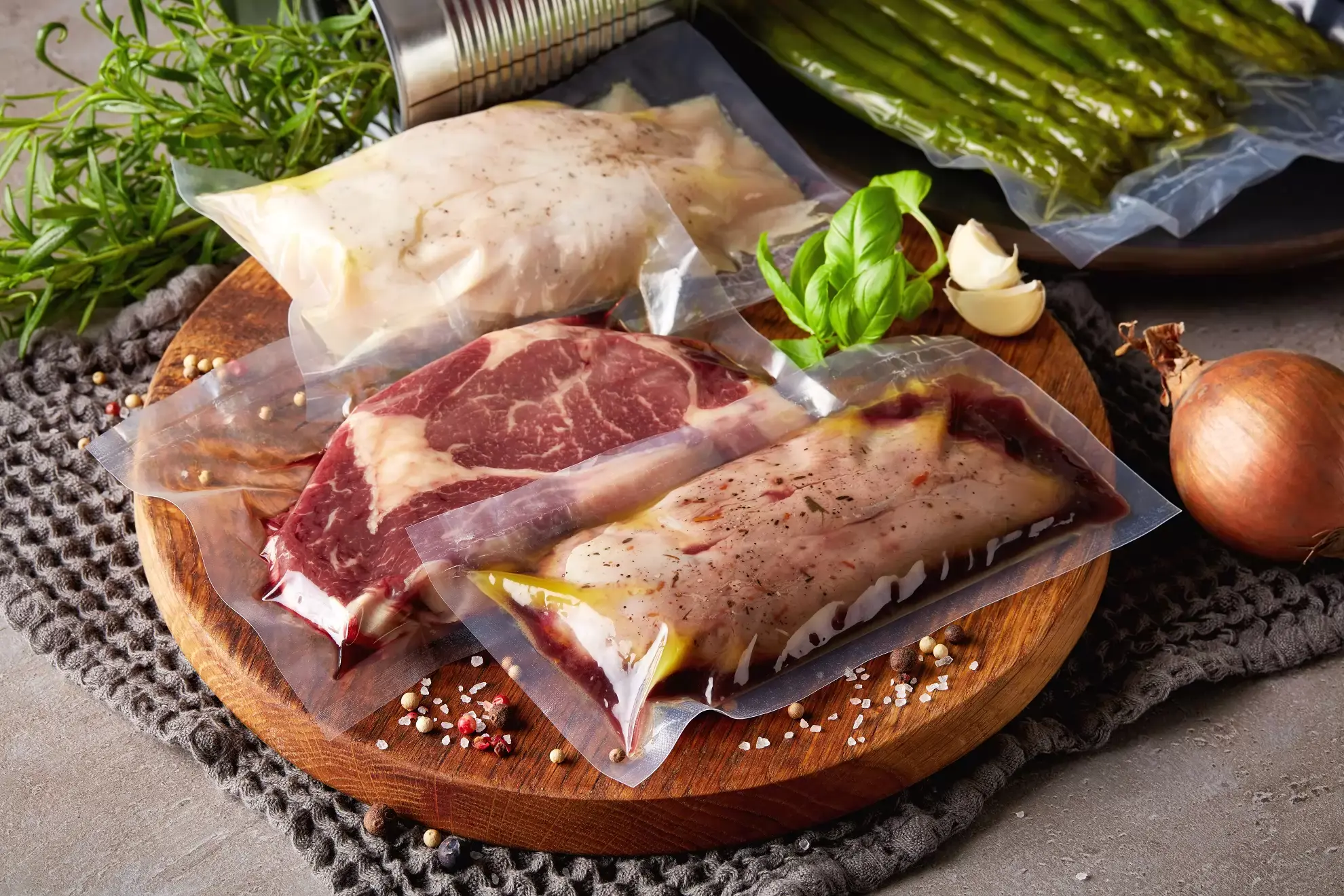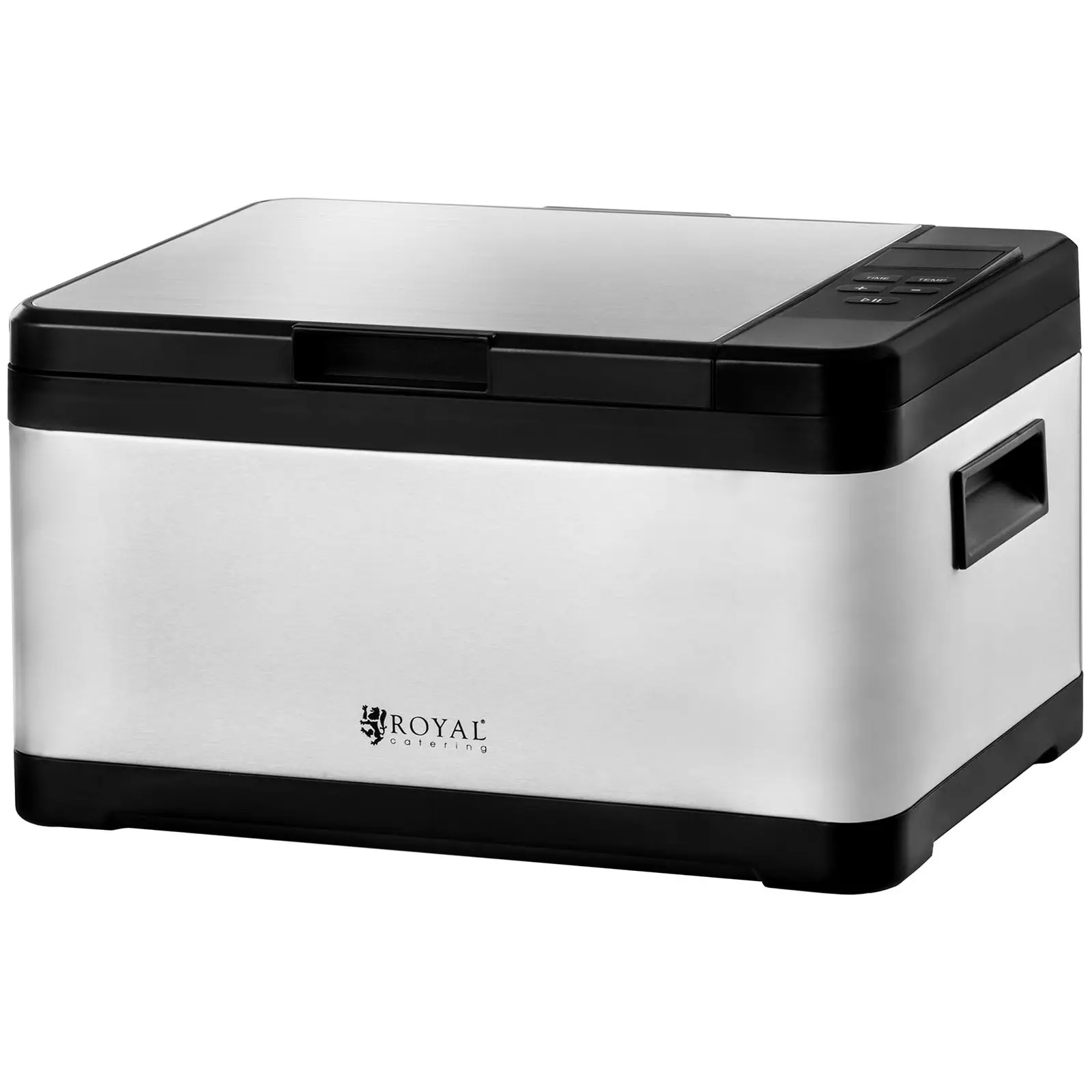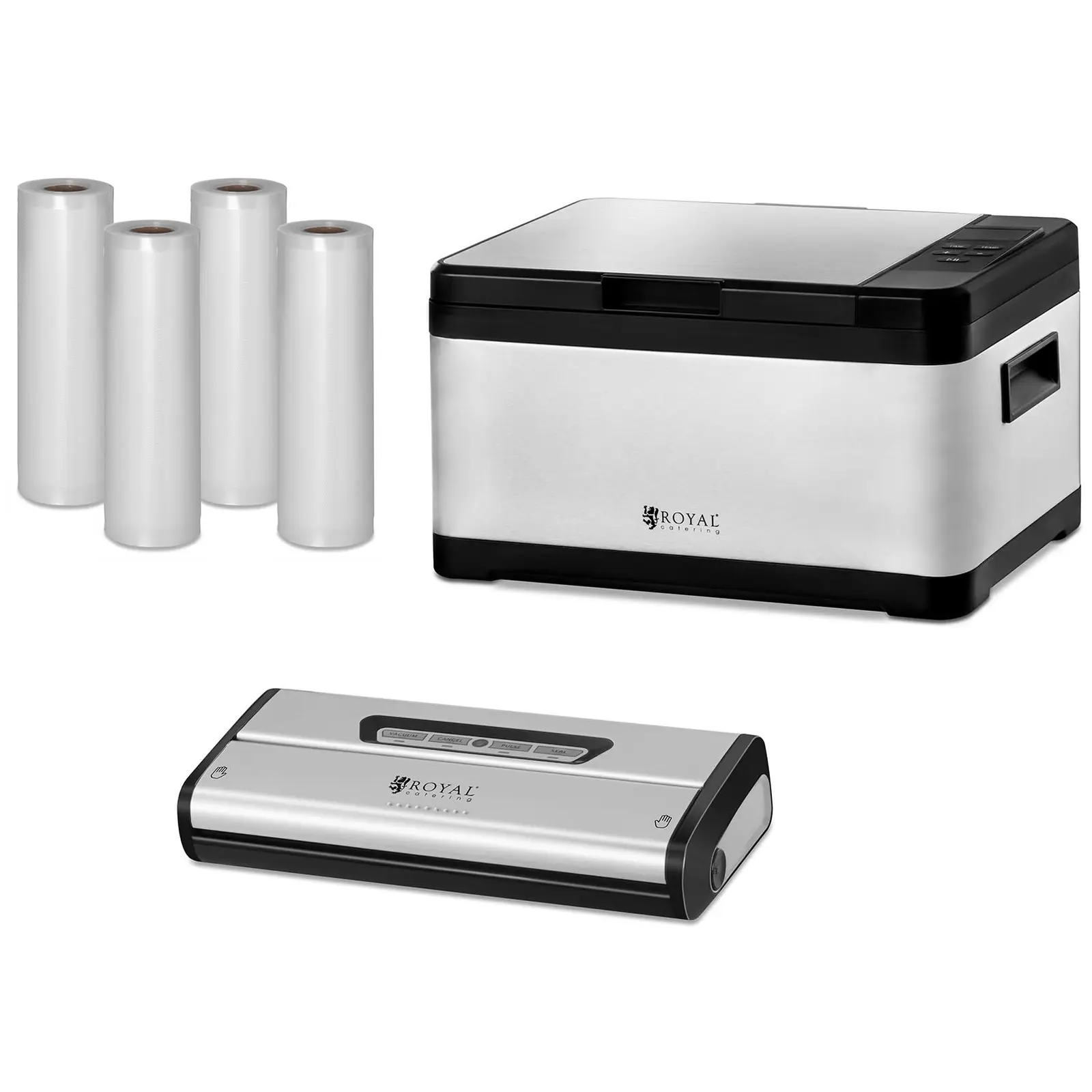If the French term sous vide leaves you puzzled, then the below short but comprehensive guide is especially for you! Sous vide is a method of thermal food processing, particularly popular in the food and beverage industry. But now you can use this method in your company too!

If the French term sous vide leaves you puzzled, then the below short but comprehensive guide is especially for you! Sous vide is a method of thermal food processing, particularly popular in the food and beverage industry. But now you can use this method in your company too!
It all started with a vacuum – so what exactly is sous vide?
Sous vide is French for ‘in a vacuum’. As you have probably guessed, the concept came from France. The method got its name from cooking food in vacuum sealed bags. The ingredients are boiled in hot water, at a set temperature. To start using this method, you need to make sure you have the right tools – bags, a vacuum sealer and a sous vide cooker with a chamber or cooking circulator (different type). However, before we further discuss the equipment, lets have a look at some of the advantages of sous vide cooking in vacuum sealed bags.
Delicious and healthy – these are just some of the advantages of the sous vide method
Today, with growing consumer awareness, restaurateurs need to pay even more attention to the nutritional value and taste of the food they serve. This is where the sous vide method comes in.
The cooking temperature is below 100 °C, letting you keep the most valuable ingredients, e.g. vitamins. This is especially important when cooking vegetables. In addition, you don’t need a lot of salt or other spices, because the ingredients keep their natural flavour thanks to the tight seal on the bag. If you decide to go for a dish like sous vide beef, you will be happy to see that the meat is cooked in all its natural juices, keeping its delicious flavour.
But there’s more…
The sous vide vacuum seal guarantees that your dishes will not only taste delicious, but smell good too. However, the smell of food will not take over your whole kitchen as is usually the case. Another benefit is less washing up! After cooking with what some people call “suvee bags”, you won’t have to deal with a pile of dirty pots and pans. Of course, you can still use them, but only as an option if you choose to do so: e.g. to bake cooked meat and get a crispy crust finish.
You have probably noticed on numerous occasions, both professionally and at home, that meat or fish tends to get smaller during thermal processing. This is not the case with sous vide bags. Thanks to vacuum seal cooking, chicken breasts or salmon steaks will keep their original shape and size.
Later storage of prepared food is yet another significant advantage of sous vide cooking bags, allowing you to prepare vacuum sealed pre-cooked meals. Vacuum seal cooked food is virtually free of oxygen, meaning that bacteria do not have the right conditions to grow in, so the food can be stored for long periods of time. However, you must remember that fresh food, (even vacuum-packed in sous vide bags) should be kept in a refrigerator.
Suvee cooking cooking in four easy steps
Sous vide is a rather time-consuming method, but is definitely worth it! Before you try it out, you need to properly prepare yourself, expecially if it is your first time.
To start off with, heat the water to the optimum temperature – it shouldn’t be too high or too low. There are specific temperature ranges for particular ingredients, which you can easily find in many on-line guides to sous vide cooking. For example:
- vegetables – from 80 to 85ºC
- fish – from 58 to 60ºC
- pork – from 65 to 66ºC
- poultry – from 65 to 71ºC
The second step is packing the ingredients in sous vide vacuum bags. To do this, you really need a vacuum packer. The sous vide bag sealer will quickly and tightly close the bags and foil by sealing them together. Many manufacturers of catering equipment (among others the German brand Royal Catering) offer this type of equipment. There are many different models on the market, so you should consider your needs before buying one.
Once you have packed the raw meat (or marinated meat) and vegetables in the vacuum foil, it’s time for the third step – setting the cooking time. This is not as strictly defined as in the case of setting the temperature. Keep in mind, however, that hard and raw food will take longer to cook. For example, the cooking time for the following ingredients is:
- tender pork – from 45 minutes to 8 hours
- tough pork – from 3 to 48 hours
- poultry – from 30 minutes to 8 hours
- fish – from 30 minutes to 5 hours
If you exceed the set time, there’s no need to worry! With sous bags you cannot overcook or burn your food. When the food is ready, you can give it a crispy crust finish as desired. All you have to do is fry it, grill it or briefly bake it in the oven. You can also add seasoning. These suggestions for finishing off the cooking process could be especially useful if you want to offer your customers dishes that are not only healthy, but also make their mouths water.
What equipment should you choose?
Now that you know what the sous vide method is, its time to choose the right equipment. There is a general division into two types: The first type (circulator) is immersed in water, while the second is equipped with a cooking chamber.
The sous vide circulator is a very universal cooker, and can be used with virtually any pot that is deep enough. After attaching it to the edge of the pot, it is ready for use – you just need to plug it in. First it heats the water, and then keeps it at the set temperature. The timer function allows you to easily control the set time, while the user-friendly displays allow you to intuitively monitor the key parameters of the circulator – the time and temperature. The biggest advantage of the circulator is its conveniently-small size, making it not only easier to use, but also practical for storage.
The second type of sous vide cooker has a special chamber, also called a tub. It is bigger than the circulator, but it allows you to cook a large amount of food at one time. Restaurateurs obviously appreciate large tubs, e.g. 20 litres, especially those additionally equipped with stands / bag separators. The tubs also have clear control panels with displays, making them easy to use.
Where can you find inspiration?
Are your packing device and circulator ready? Then off you go. After making sure you have the right tools, all you need to do is look for cooking ideas and culinary inspirations. The sous vide method is quite new, and many restaurants have only recently started using it. However, this doesn’t mean you cannot count on any practical advice, as the internet is simply full of recipes and suggestions for you to use. You can easily find recipes for juicy beef tenderloin, succulent chicken or duck breasts, delicate cod fillets or delicious salmon. We recommend you to watch video with recipe for mouth-watering meat burgers. Regardless of the ingredients you use, sous vide will bring out the true flavour of every dish. The food will always be juicy and a sight for sore eyes.










Share